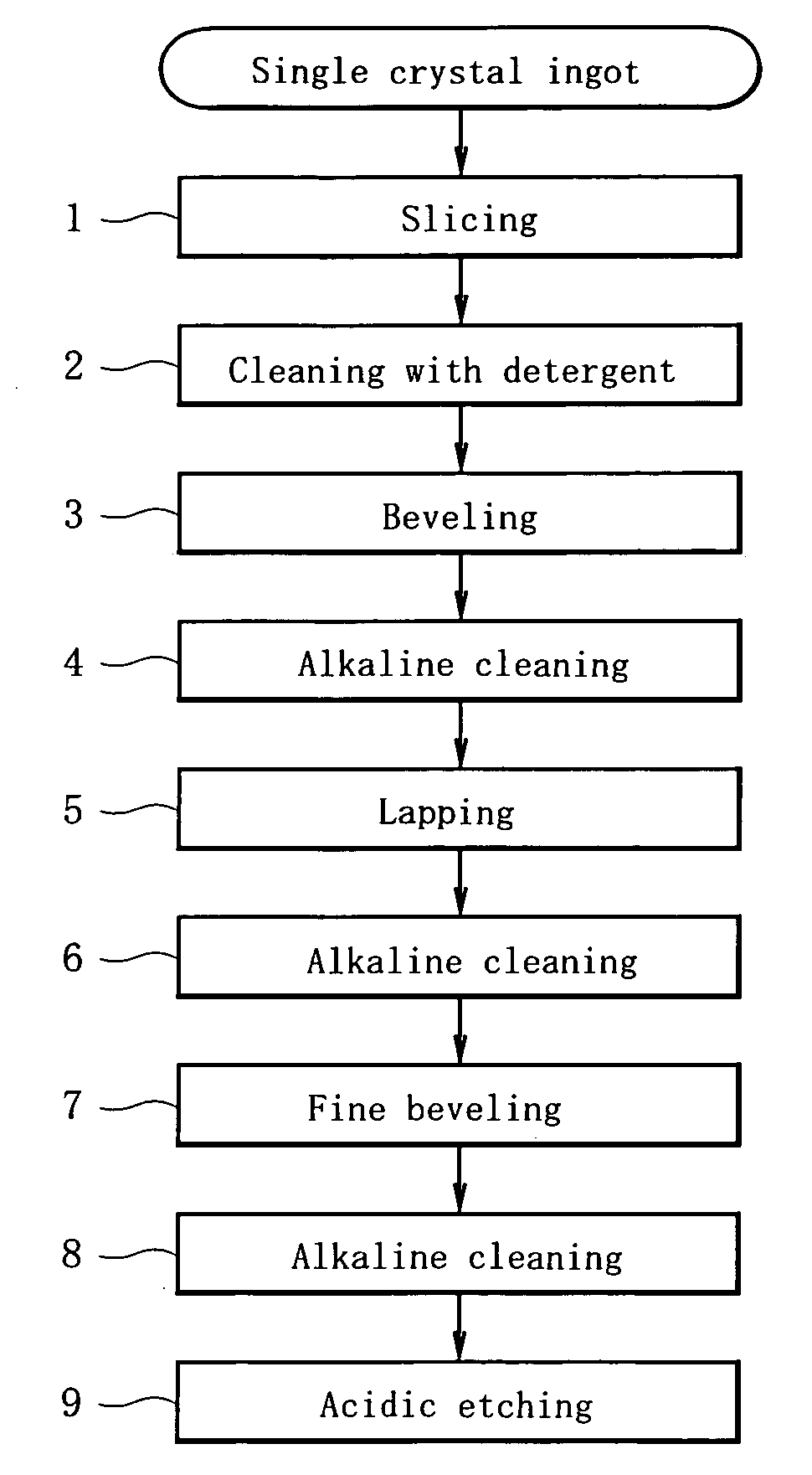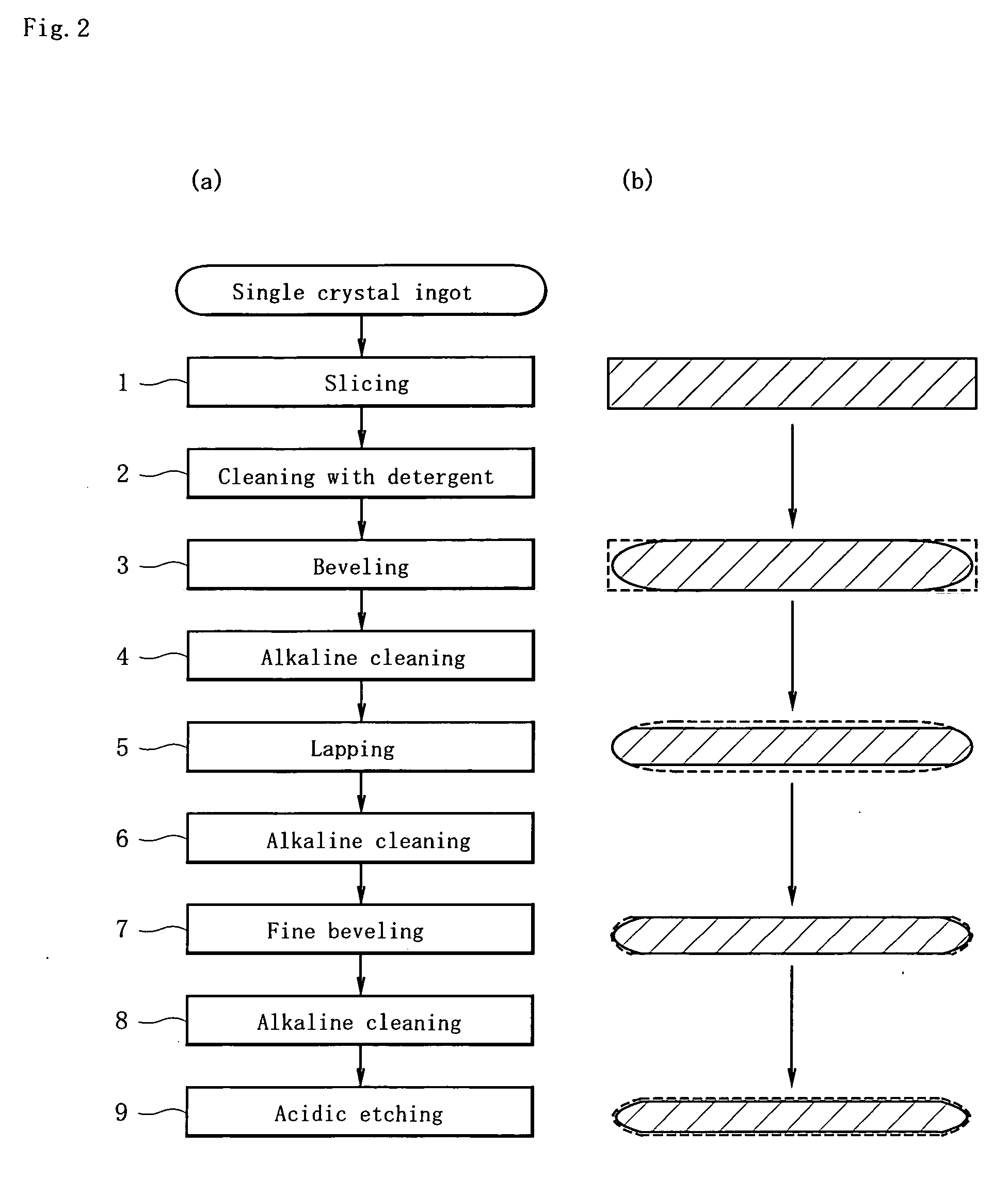Method of processing silicon wafer
a technology of silicon wafers and processing methods, applied in the direction of decorative surface effects, electrical appliances, decorative arts, etc., can solve the problems of degrading the surface of adjacent wafers, and achieve the effect of reducing the risk of contamination of adjacent wafers and simplifying the processing of the wafers
- Summary
- Abstract
- Description
- Claims
- Application Information
AI Technical Summary
Benefits of technology
Problems solved by technology
Method used
Image
Examples
Embodiment Construction
[0022] The embodiments of the invention will be described below with reference to attached drawings.
[0023] First, a grown single silicon crystal rod is cut at its frond and rear ends, and then divided into a number of blocks. The block has its periphery abraded until it becomes a cylinder having a uniform diameter. Then, an orientation flat or a notch is formed to mark the specified orientation of the crystal to produce a single crystal ingot product. The orientation flat and the notch are utilized as a reference for placing the wafer properly with respect to masks in a subsequent step during its elaboration into a device. After the step, the single crystal ingot is sliced at a specified angle to the longitudinal axis of the ingot with the blade of a cutter into thin, disc-like slices, thereby producing a plurality of silicon wafers as shown in FIG. 1(a) (step 11). FIG. 1(b) shows the cross-sections of silicon wafers having undergone the corresponding steps of FIG. 1(a).
[0024] Acc...
PUM
| Property | Measurement | Unit |
|---|---|---|
| thickness | aaaaa | aaaaa |
| thickness | aaaaa | aaaaa |
| volume ratio | aaaaa | aaaaa |
Abstract
Description
Claims
Application Information
 Login to View More
Login to View More - R&D
- Intellectual Property
- Life Sciences
- Materials
- Tech Scout
- Unparalleled Data Quality
- Higher Quality Content
- 60% Fewer Hallucinations
Browse by: Latest US Patents, China's latest patents, Technical Efficacy Thesaurus, Application Domain, Technology Topic, Popular Technical Reports.
© 2025 PatSnap. All rights reserved.Legal|Privacy policy|Modern Slavery Act Transparency Statement|Sitemap|About US| Contact US: help@patsnap.com



